1
/
14
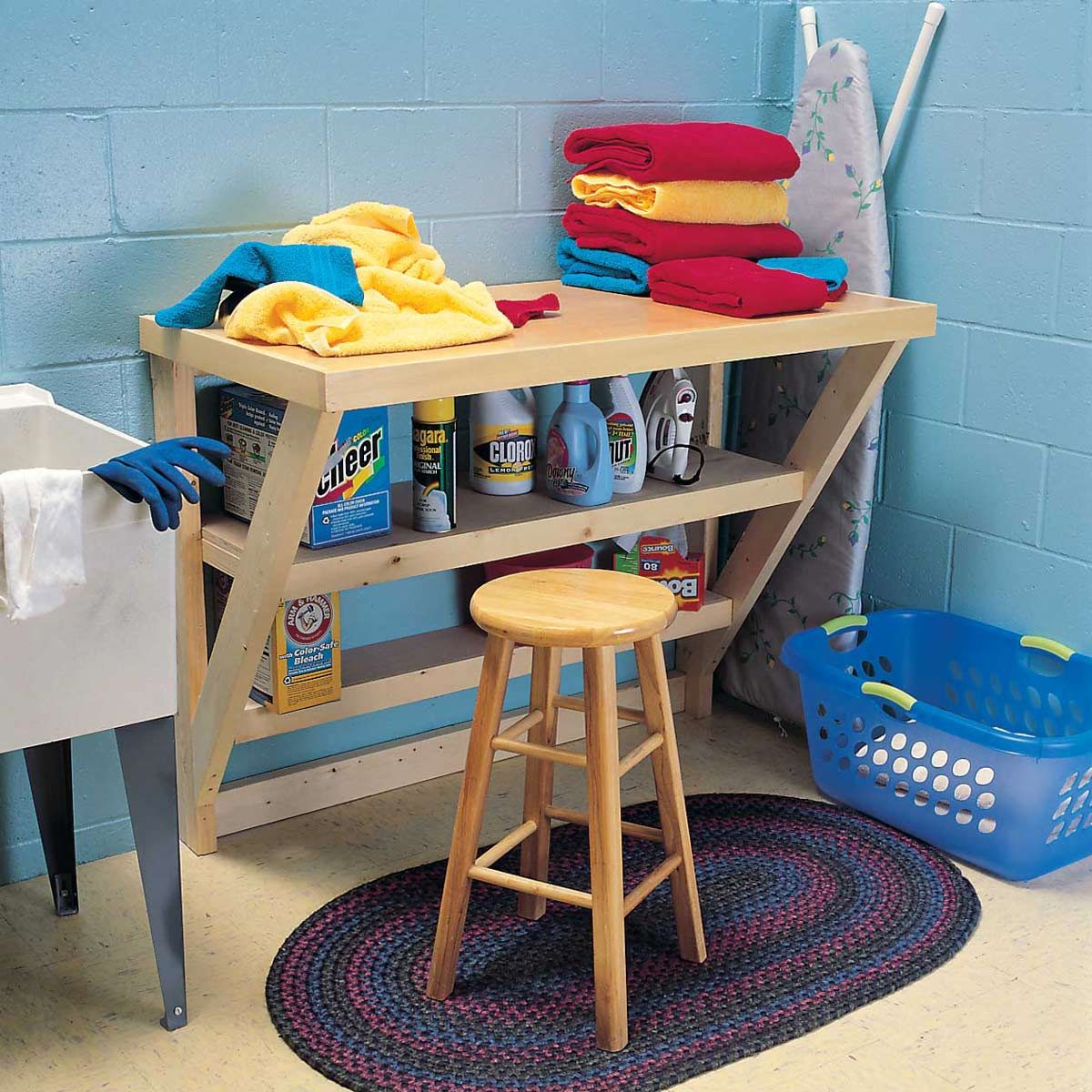
Fully Clean and Dry All Clothing First
Wash and dry any clothing that's ready for storage, including clothing that you may not regularly wash. If appropriate, take clothing out to a dry cleaner for a full cleaning instead. First, this helps get rid of dirt and food bits that may be attractive to insects. Second, it gets rid of oils and stains that can "set" over the off-season and show up even if you can't see them right now. So thoroughly clean the clothes and make sure they are completely dry before you pack them away.
Plus: Laundry room ideas
2
/
14

Take Time for a Little Maintenance
If your clothes have been through a lot, they may need a little attention. Take this opportunity to replace missing buttons, iron out deep-set wrinkles, and remove those annoying fabric pills from winter sweaters. It's better to do this now rather than waiting until next season.
Plus: How to organize a laundry room properly
3
/
14
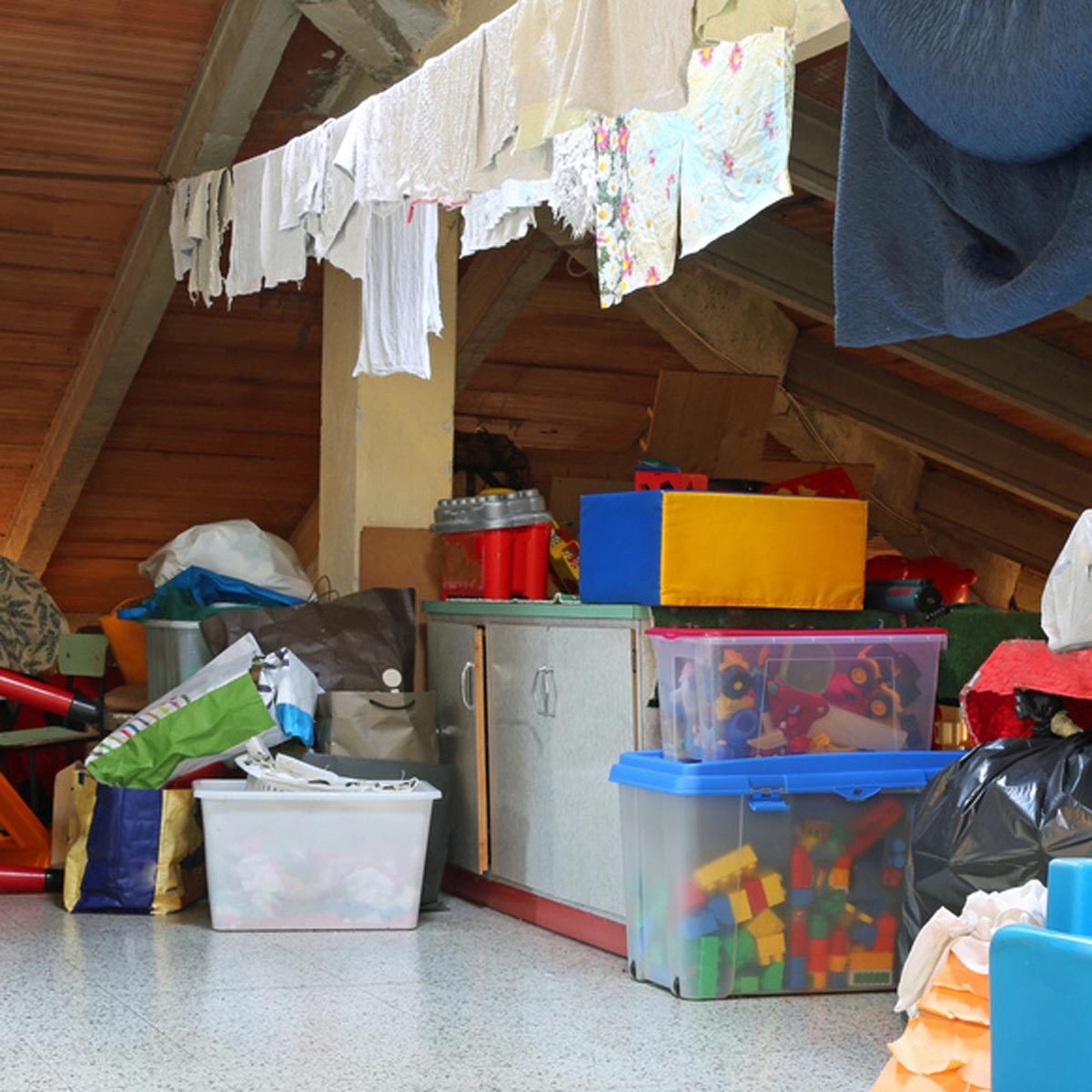
Pick a Spot with Temperature Control
When planning where to store seasonal clothes, select an area that won't get sweltering in the summer or drop below freezing in the winter. For larger storage projects, a climate-controlled storage space is the best bet, but this isn't always feasible. Otherwise, try to keep the clothes inside your insulated house and away from less protected areas whenever possible. A secondary closet space or storage under the bed are some of the best spots.
Plus: Build a low cost custom closet!
4
/
14

Fight Stubborn Odors with Baking Soda
Summer clothes in particular can start to smell toward the end of the season, especially with today's absorbent activewear that can easily harbor bacteria. These smells can be tough to remove even after a wash. If odors still linger in the clothes you are packing up, then wash them again with half a cup of baking soda and immediately put them in the dryer to stop new bacteria blooms (vinegar helps too, and won't harm most activewear). A couple cycles of this process tend to remove even stubborn smells.
Plus: Convert your laundry area into a real laundry room
5
/
14
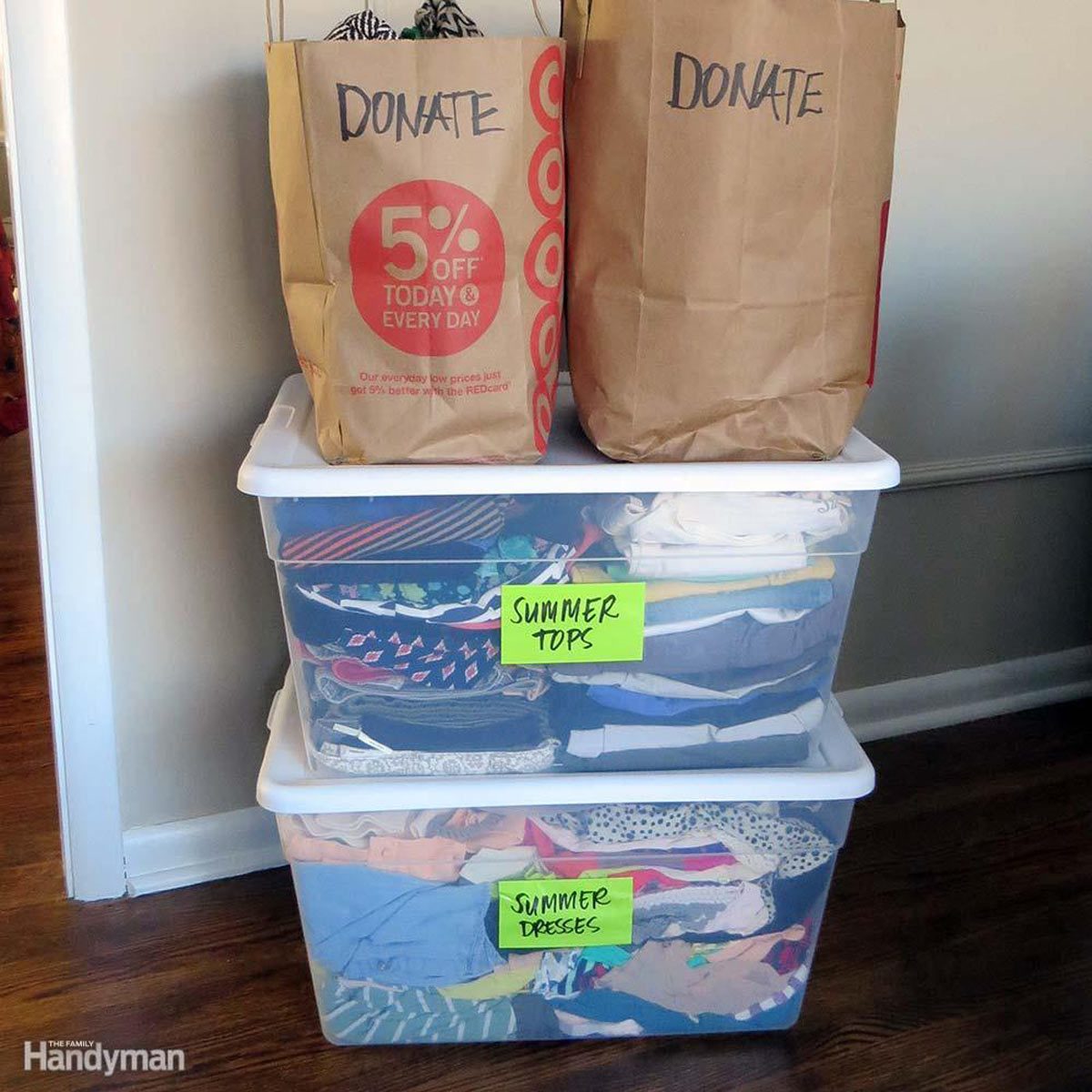
See-Through Storage
If you have a suitably temperate attic to store clothes in, select your storage bins carefully. Never store clothes in cardboard for long periods of time—cardboard can damage delicate fabrics, and it's a big draw for any pests that might be around. Instead, find a set of clear plastic bins to use instead. You can see inside, and they offer more protection for your clothes.
6
/
14
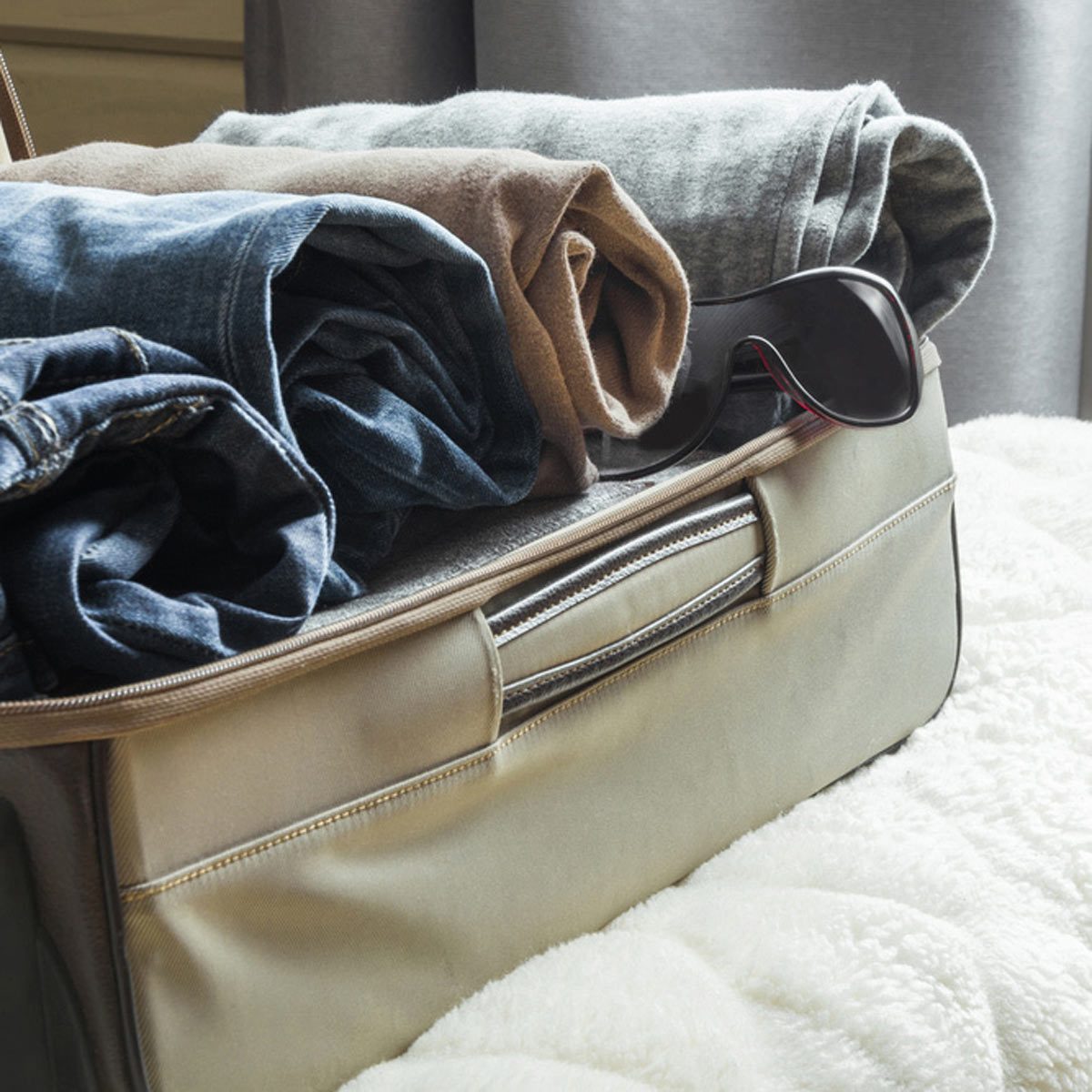
Storing in Suitcases? Roll Away
If you already have a few unused suitcases around, they can be suitable for storing seasonal clothes (and won't take up any extra room). Roll common clothes like shirts, sweaters and pants into loose bundles before storing them. They take up less room this way, and can breathe easier.
7
/
14
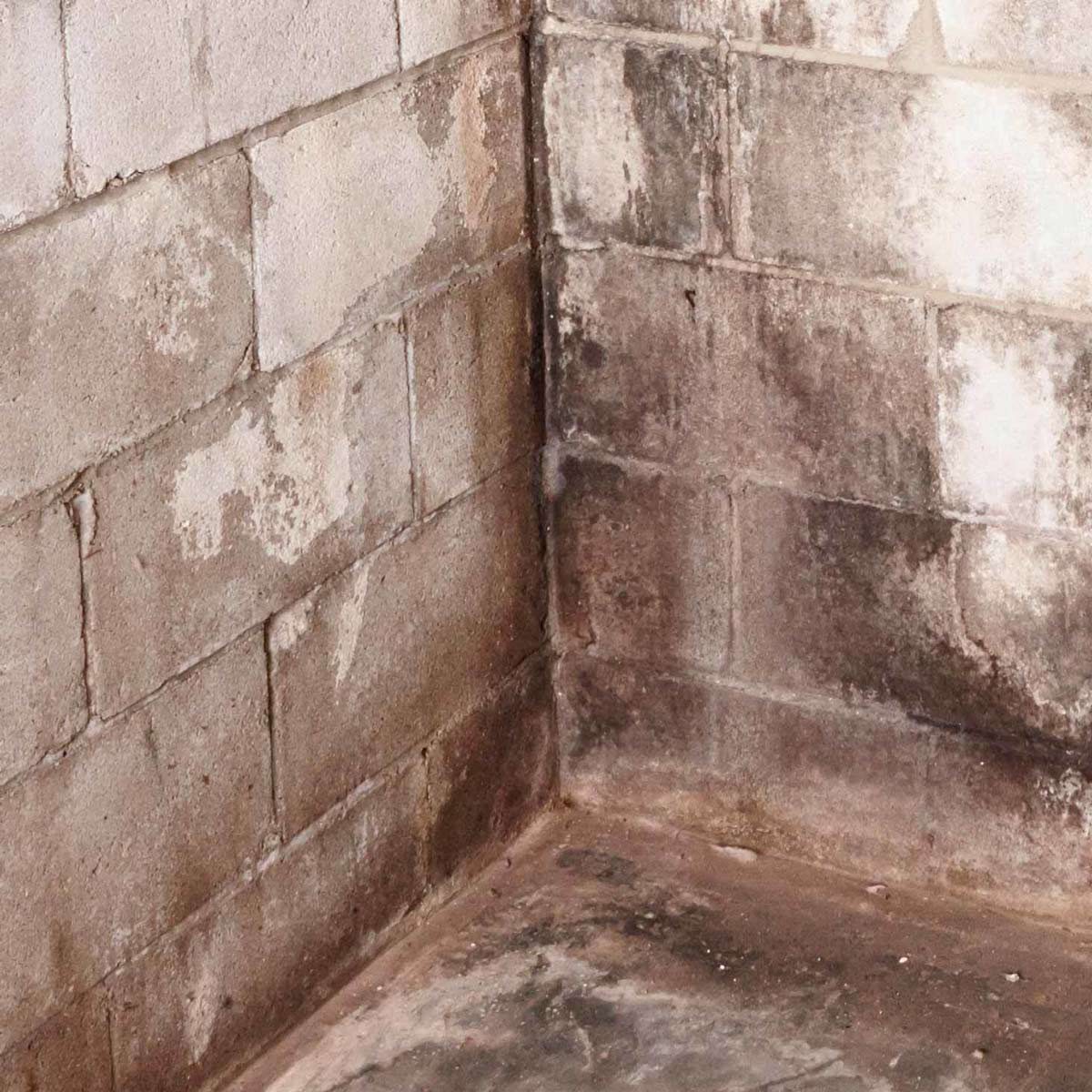
Using Your Basement? Beware Moisture
Basements tend to have free space, but they come with a certain amount of risk. Basements, especially if unfinished, can struggle with moisture and humidity issues, and the last thing you want for your clothes is a problem with mold or decay. If you have to use the basement for clothes storage, then make sure you don't stack bins directly against the floors or walls. You may also want to use desiccant packs to absorb moisture from the air.
Plus: Finishing and waterproofing a basement
8
/
14
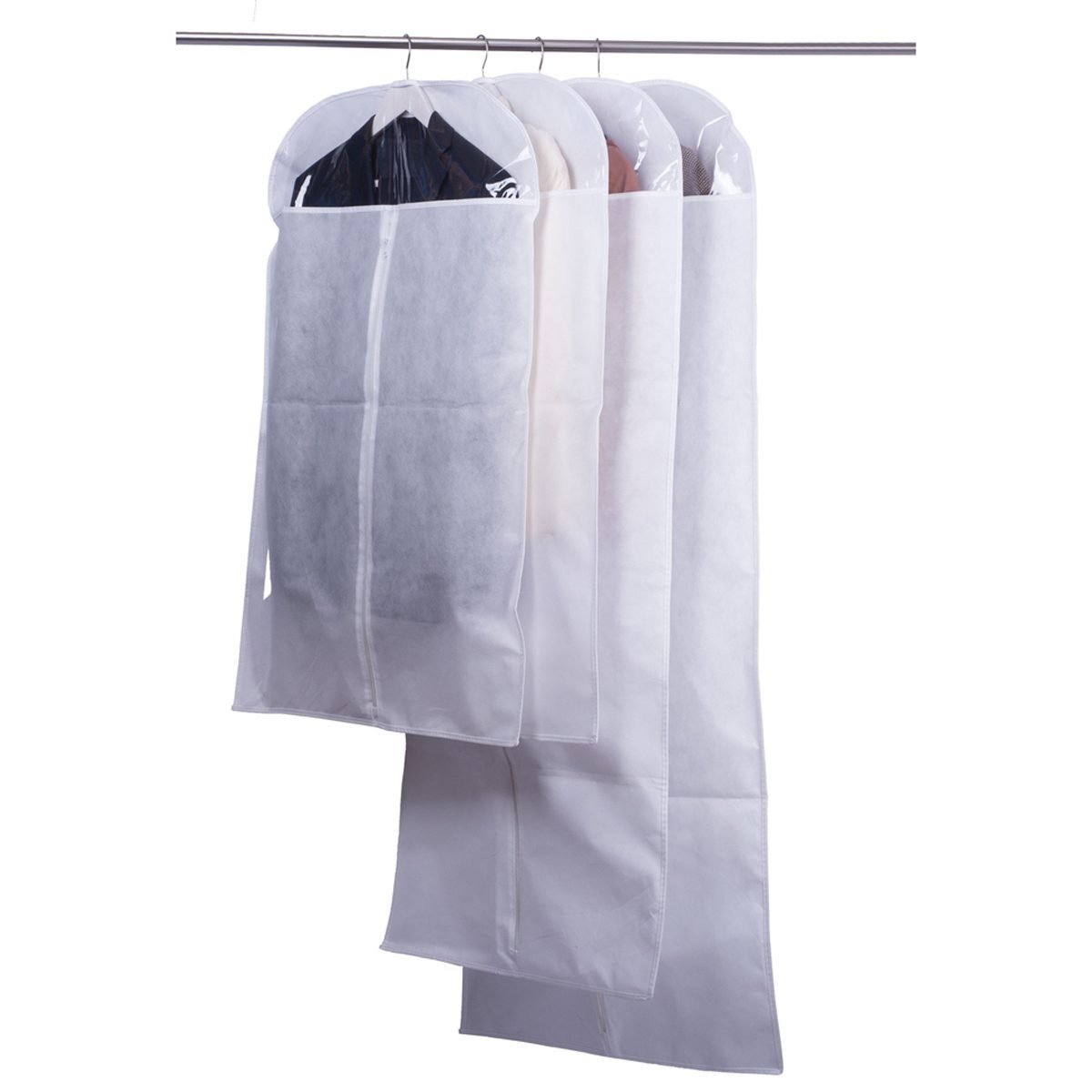
Best Way to Store Clothes: Cloth Garment Bags for Delicate Clothing
Handle expensive, delicate clothing with care by storing then in cloth garment bags. Don't ever use the plastic garment bags that come with dry cleaning, for example. This plastic can be bad for your clothes, especially in the long term—remember, your clothes need to breathe, too.
Plus: Shelf and rod organization for your closet
9
/
14
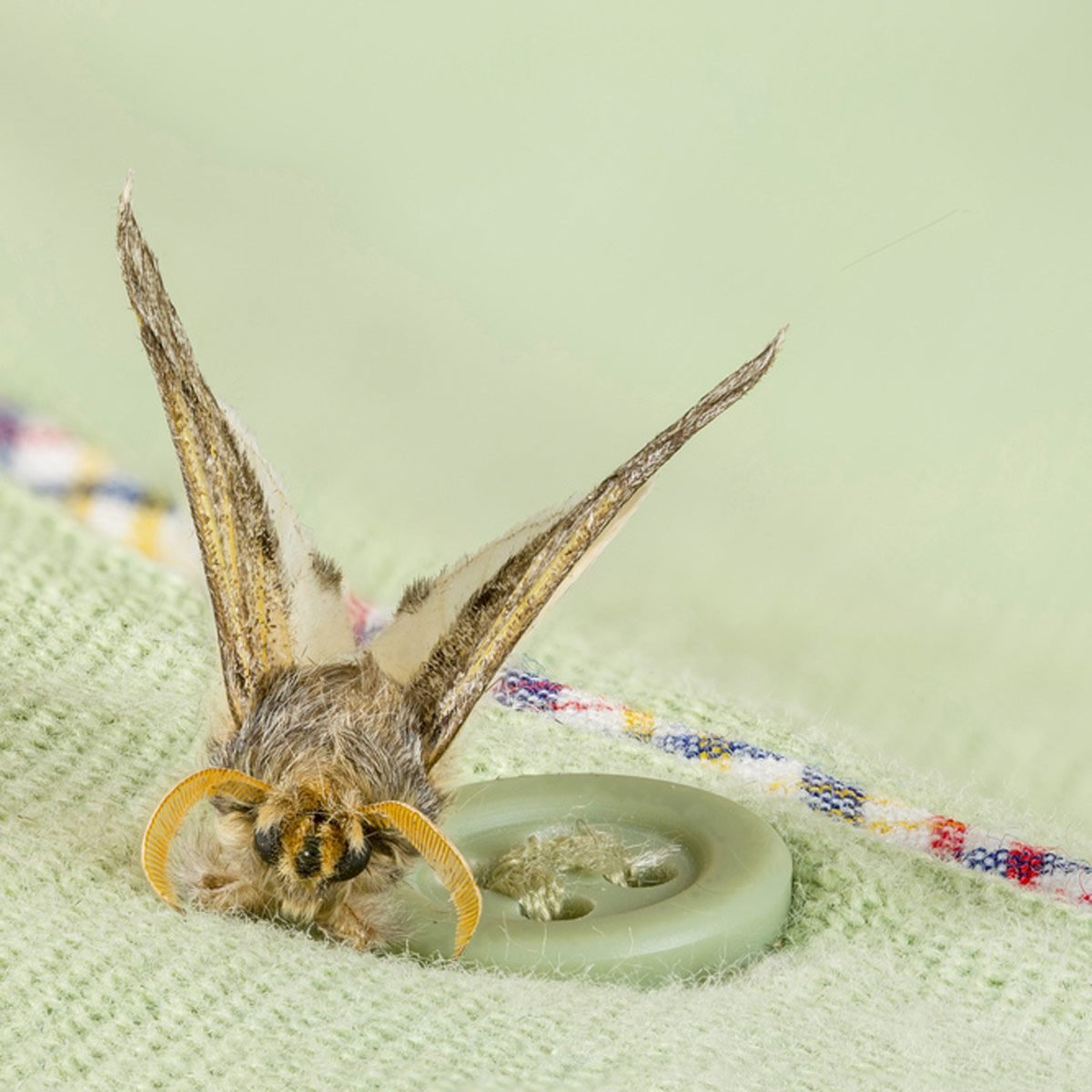
Worried About Moths? Deny Them Access
Mothballs stink and only work in closed-off spaces. When possible, avoid using them entirely. If you are really worried about moths getting into your clothing, then focus on prevention. Don't store your clothes in an area that moths have access to. If your attic or storage area needs to be better sealed or screened for protection, now is a great time for that project.
Note: Thorough drying and ironing will destroy moth eggs that may have gotten into clothing from other sources. Another good reason to always clean and dry clothes first!
Plus: How to Control Bugs
10
/
14
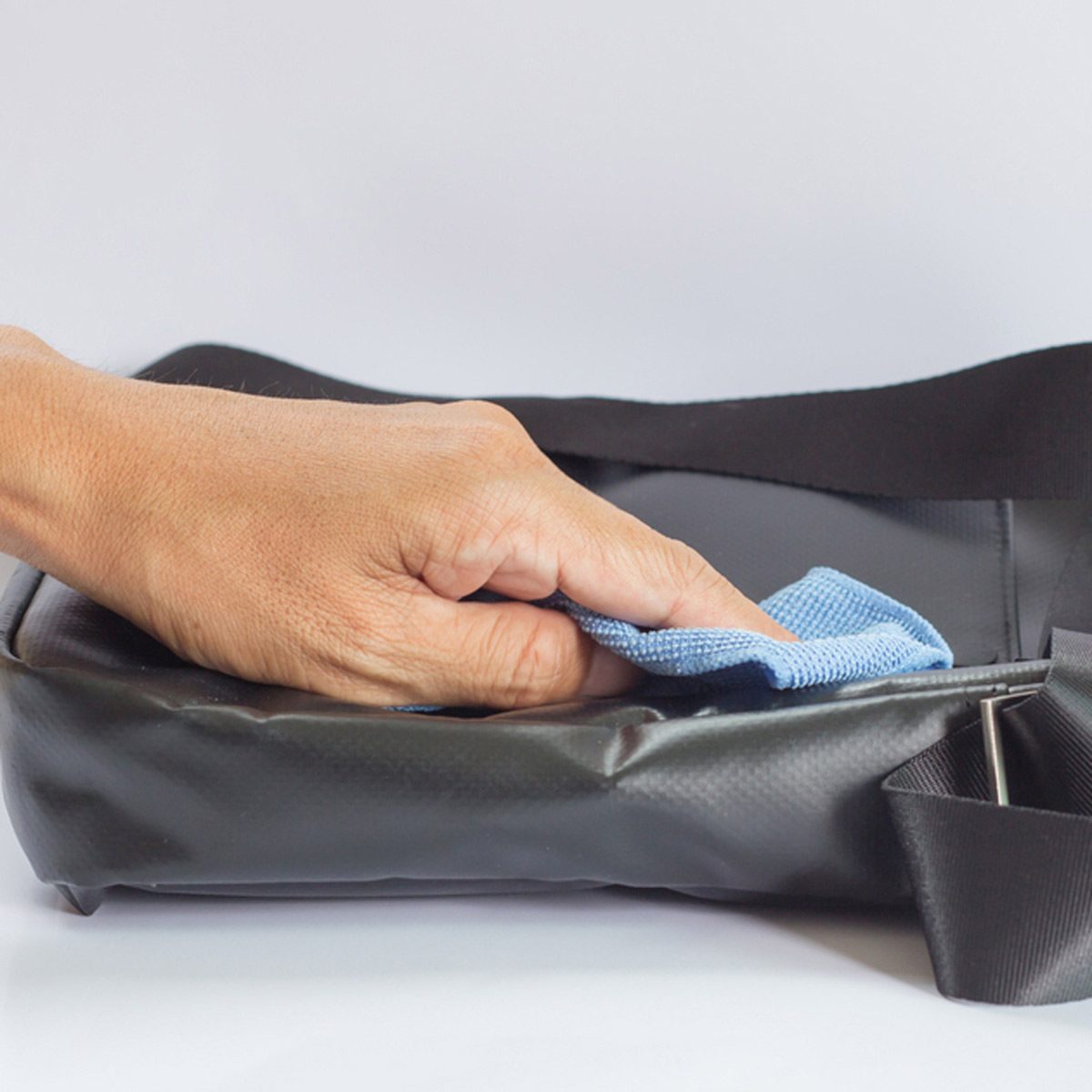
Set Up a Separate Space for Leather Clothing
Are you storing leather for months at a time? Clean it and apply a light leather oil for protection. Always store leather clothing and accessories where they can breathe and won't come in contact with any other clothes. The protective oil is bad news for other fabrics.
Plus: How to repair leather
11
/
14
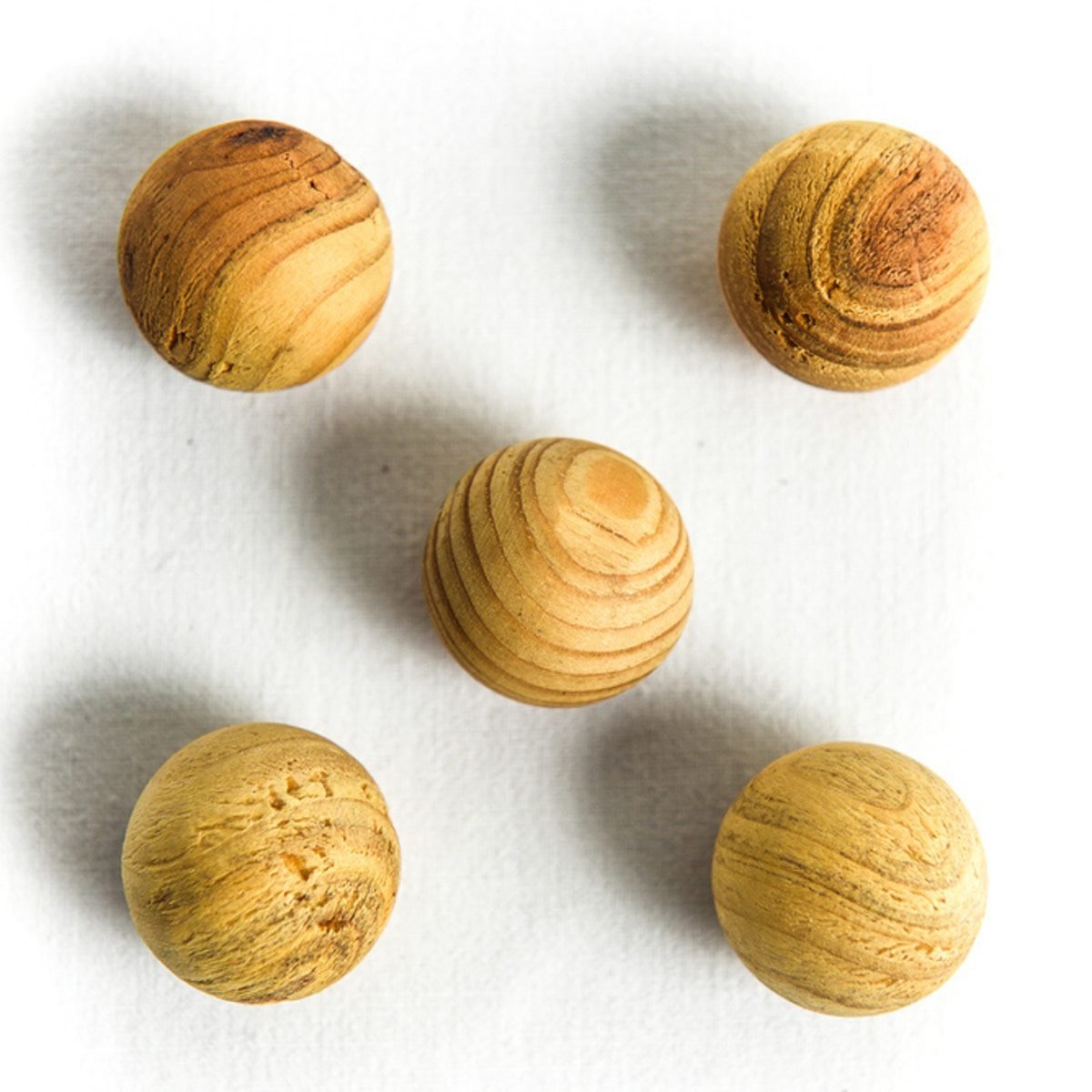
Use Cedar to Keep Clothes Smelling Fresh
There are many methods for keeping fabrics fresh. Cedar is one of our favorite options, because it provides a natural scent that also helps keep away bugs (although cedar wood shouldn't contact clothing directly). You can also add dried lavender or dryer sheets for similar effects.
Plus: What to do about a smell in the house
12
/
14
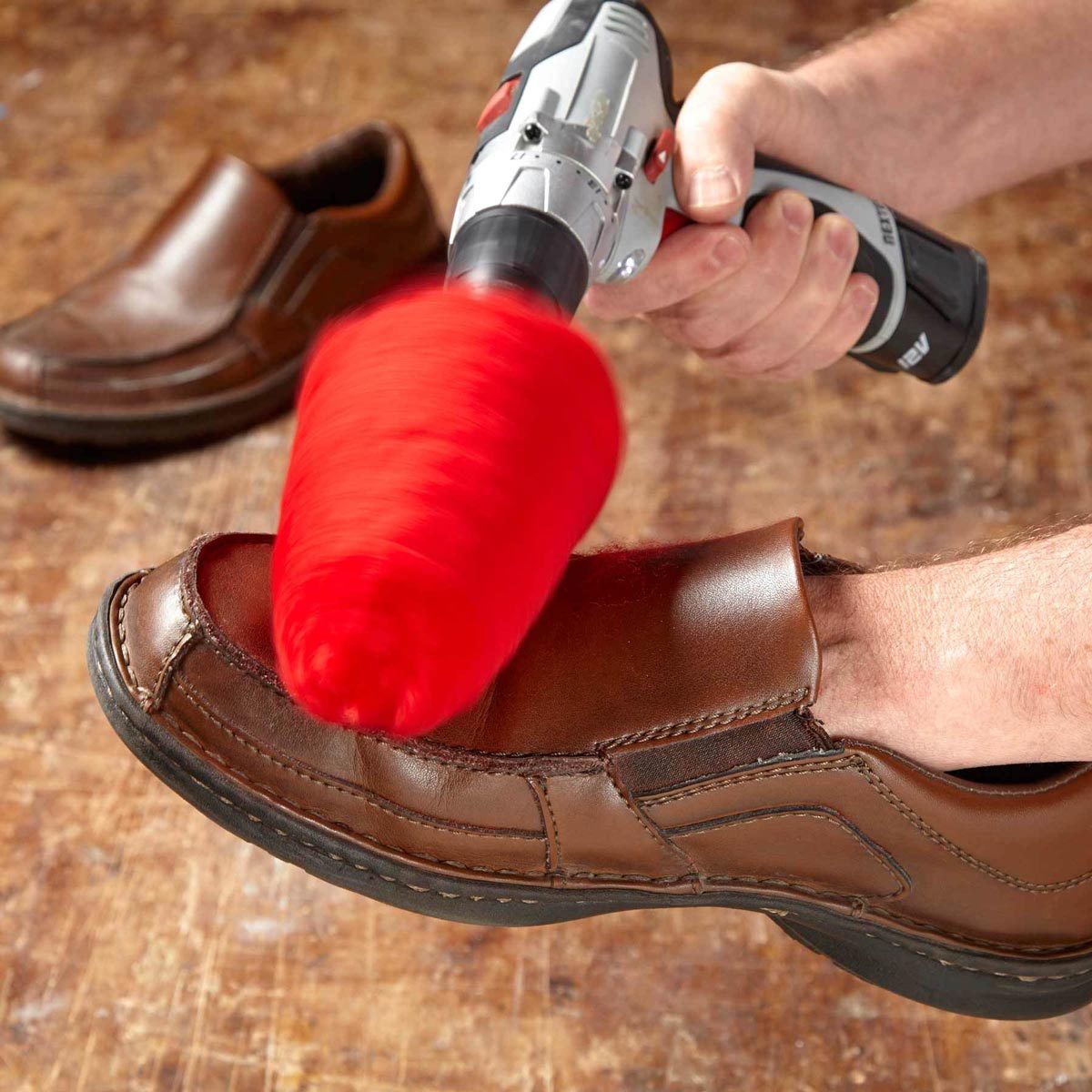
Prepare Shoes Properly
If you want to give shoes and boots maximum protection, they may need a little extra work. Brush your shoes down (or wash them) to remove all dirt. Add a pinch of baking soda inside to help take care of odors. For more delicate shoes and boots, use a shoe tree so they will keep their proper shape.
Plus: Build a shoe organizer
13
/
14

Build Your Own Trunk or Shelves for More Room
You can also choose to create additional storage space for seasonal clothes. A wooden trunk is ideal storage and can even double as decorative piece.
14
/
14
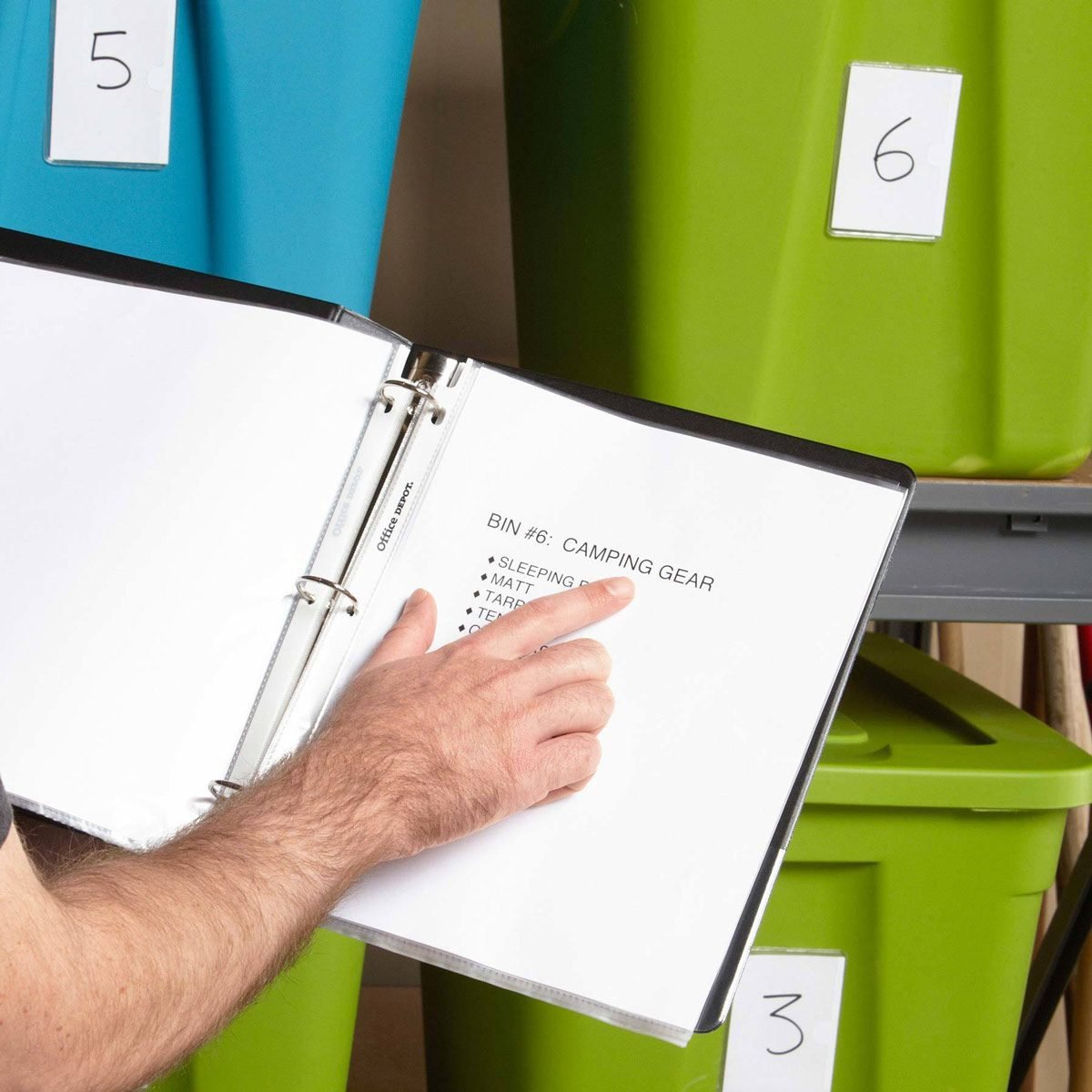
Label as You Go
Even with plastic bins it can be difficult to keep track of what clothing goes where. Label the bins and storage spaces that you use so you know exactly what type of clothing is waiting there for next year.
Plus: 18 Life-Changing Organizing Ideas for Hard-to-Store Stuff